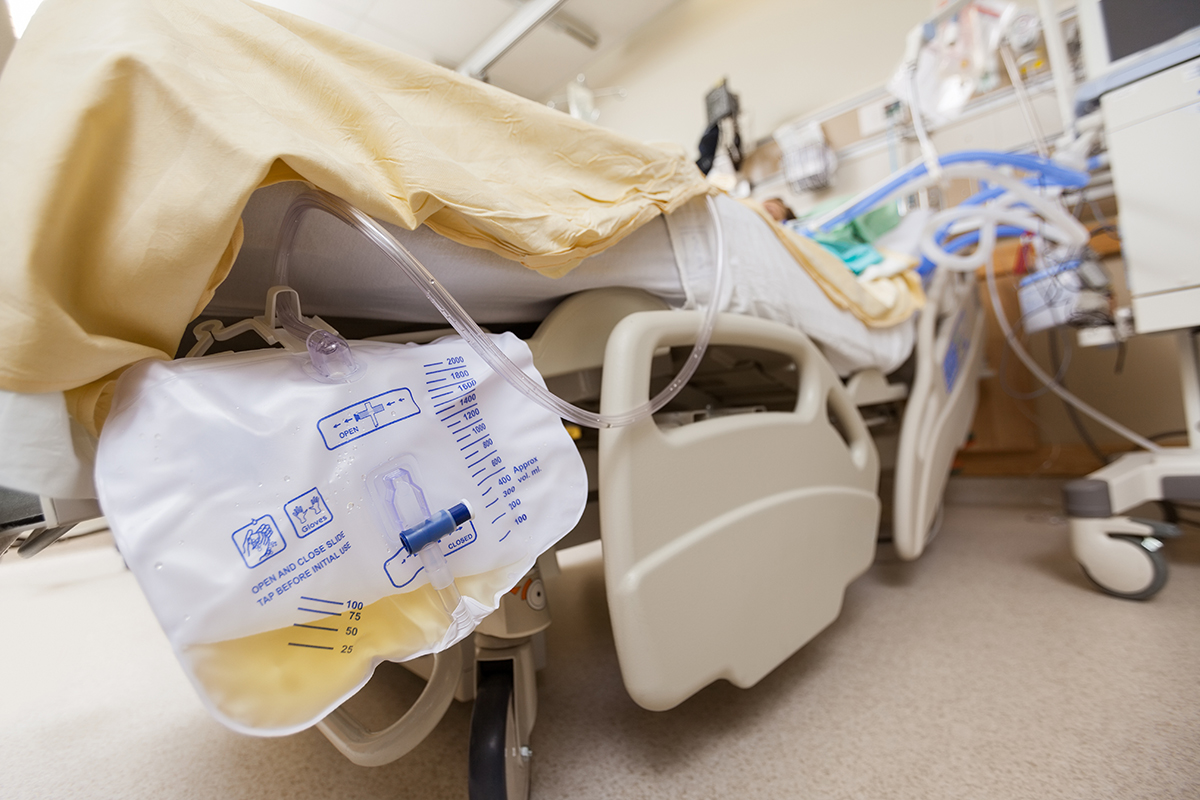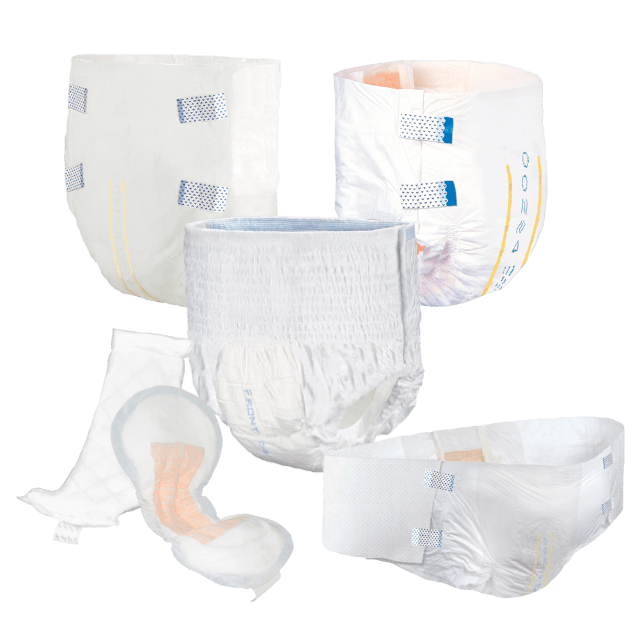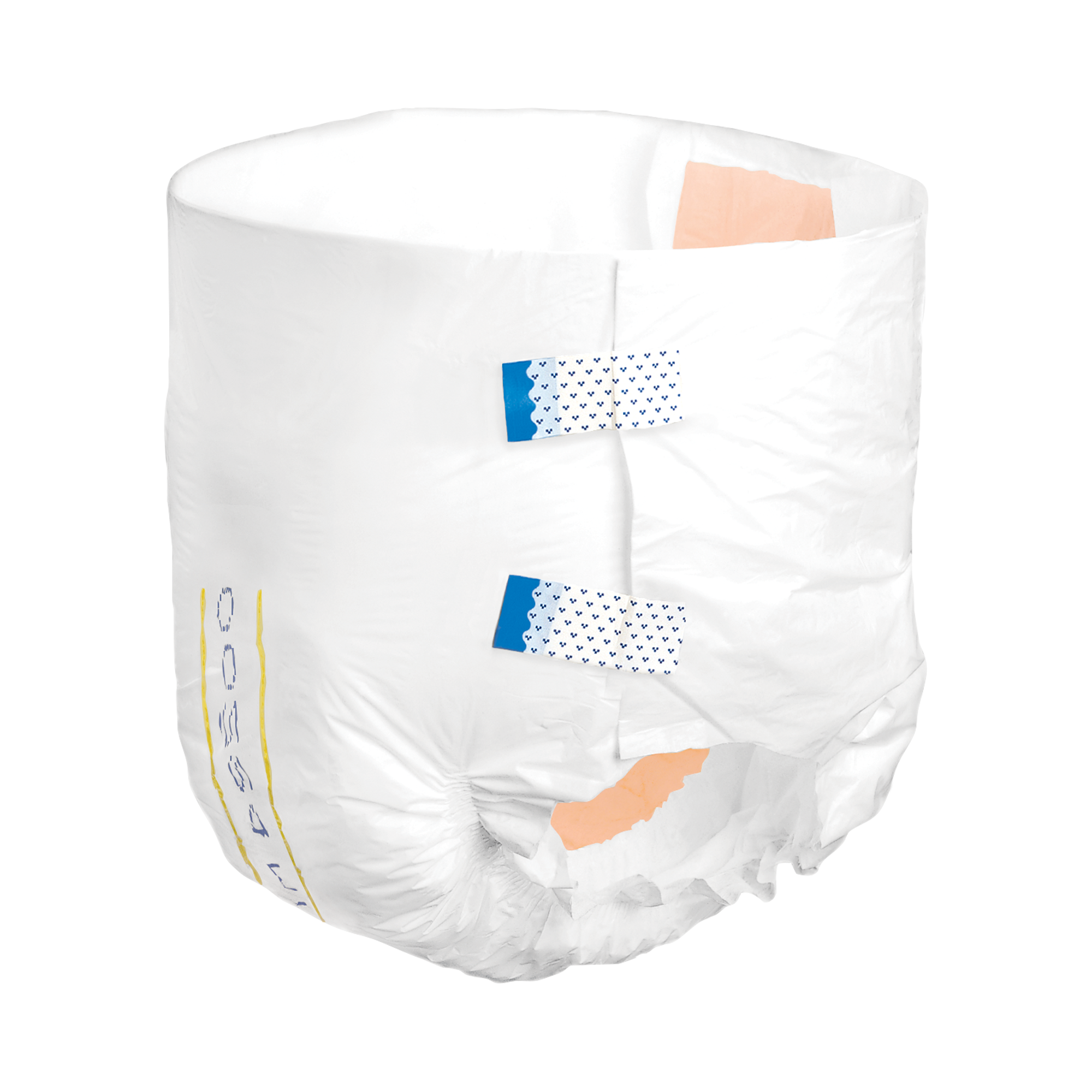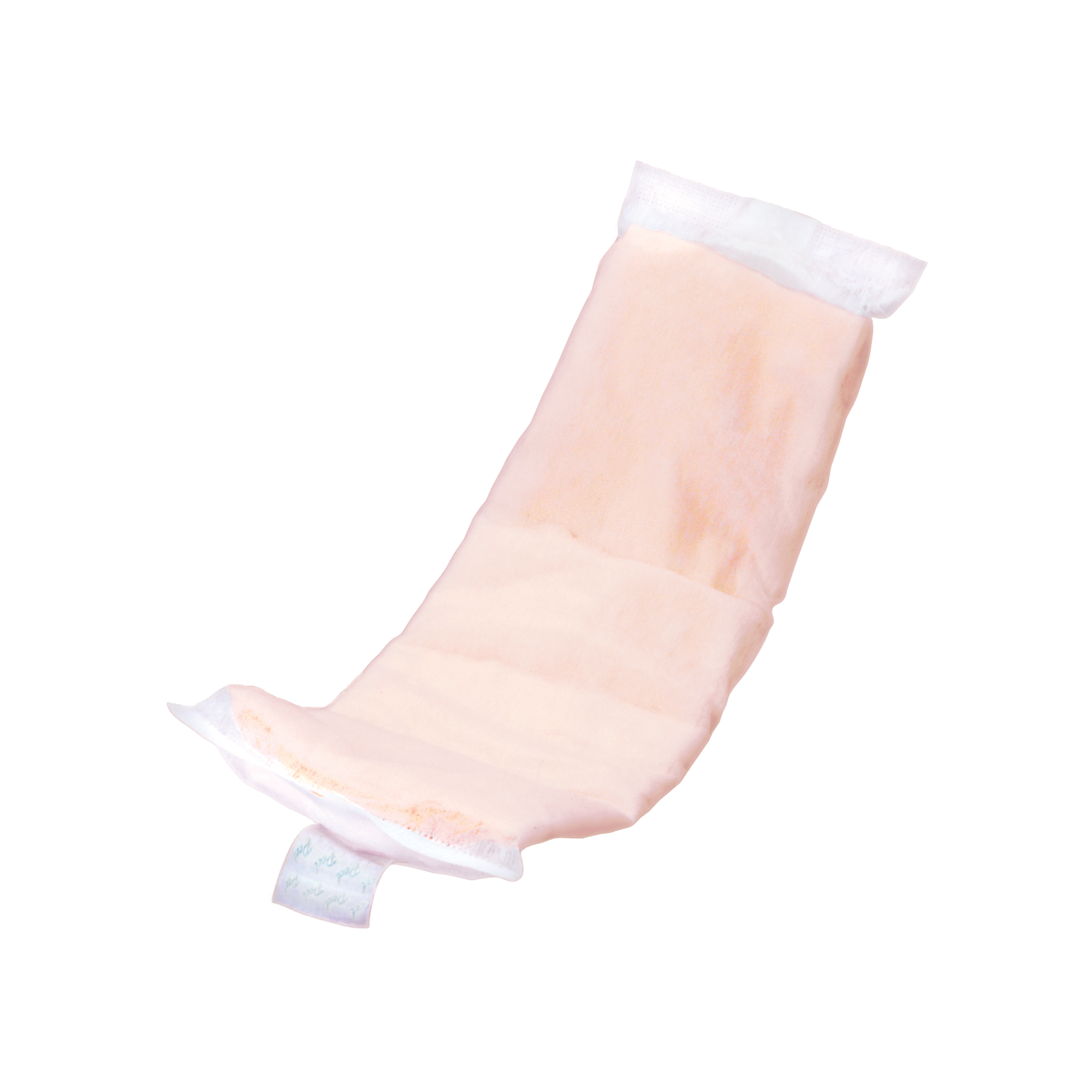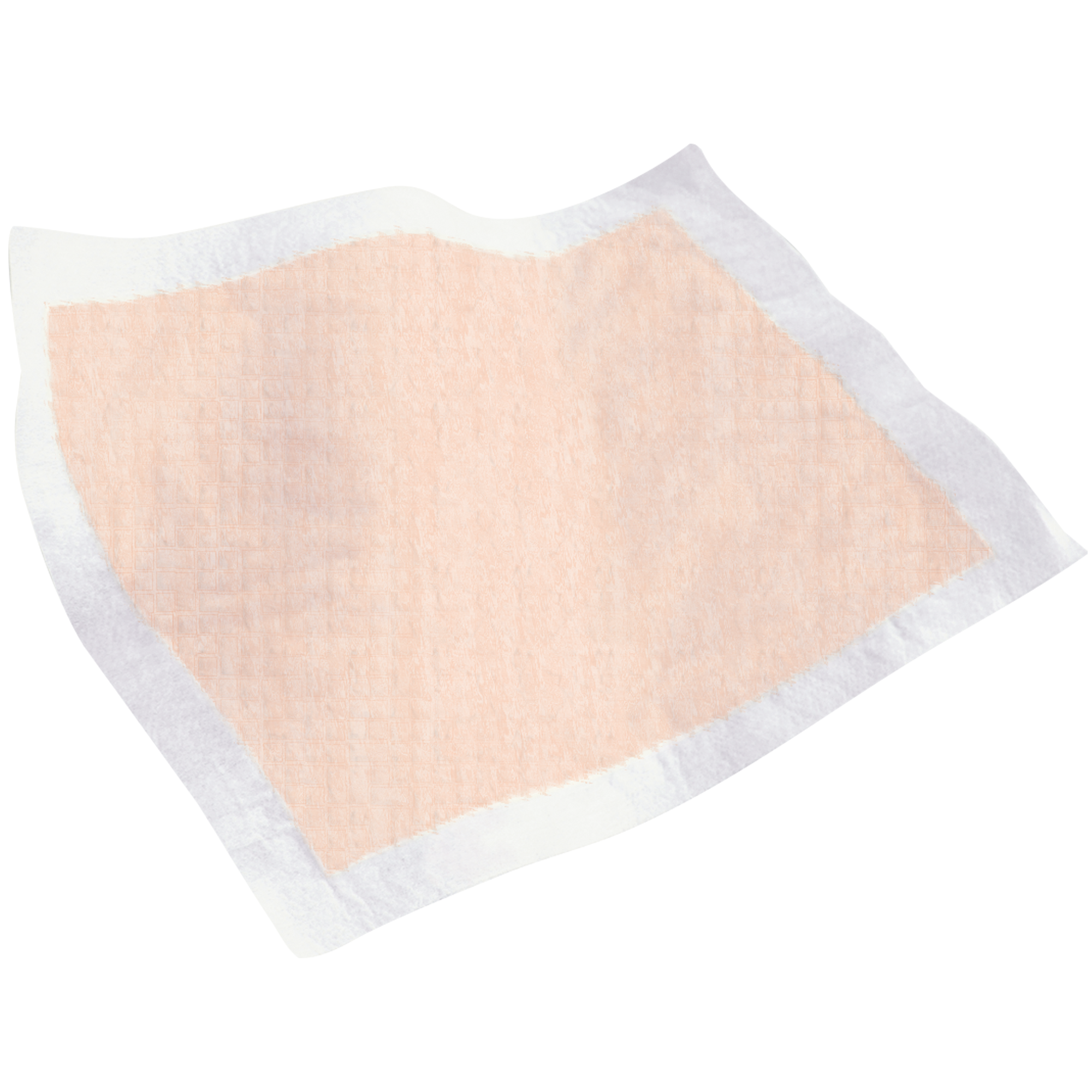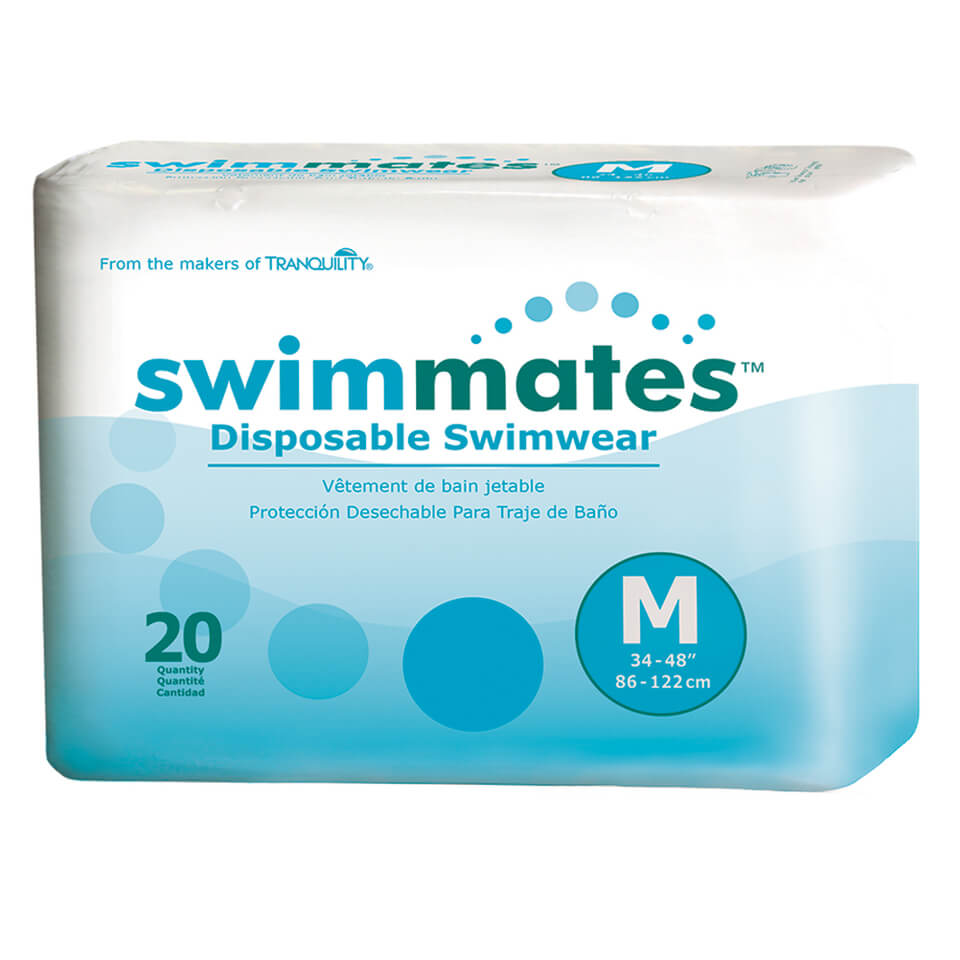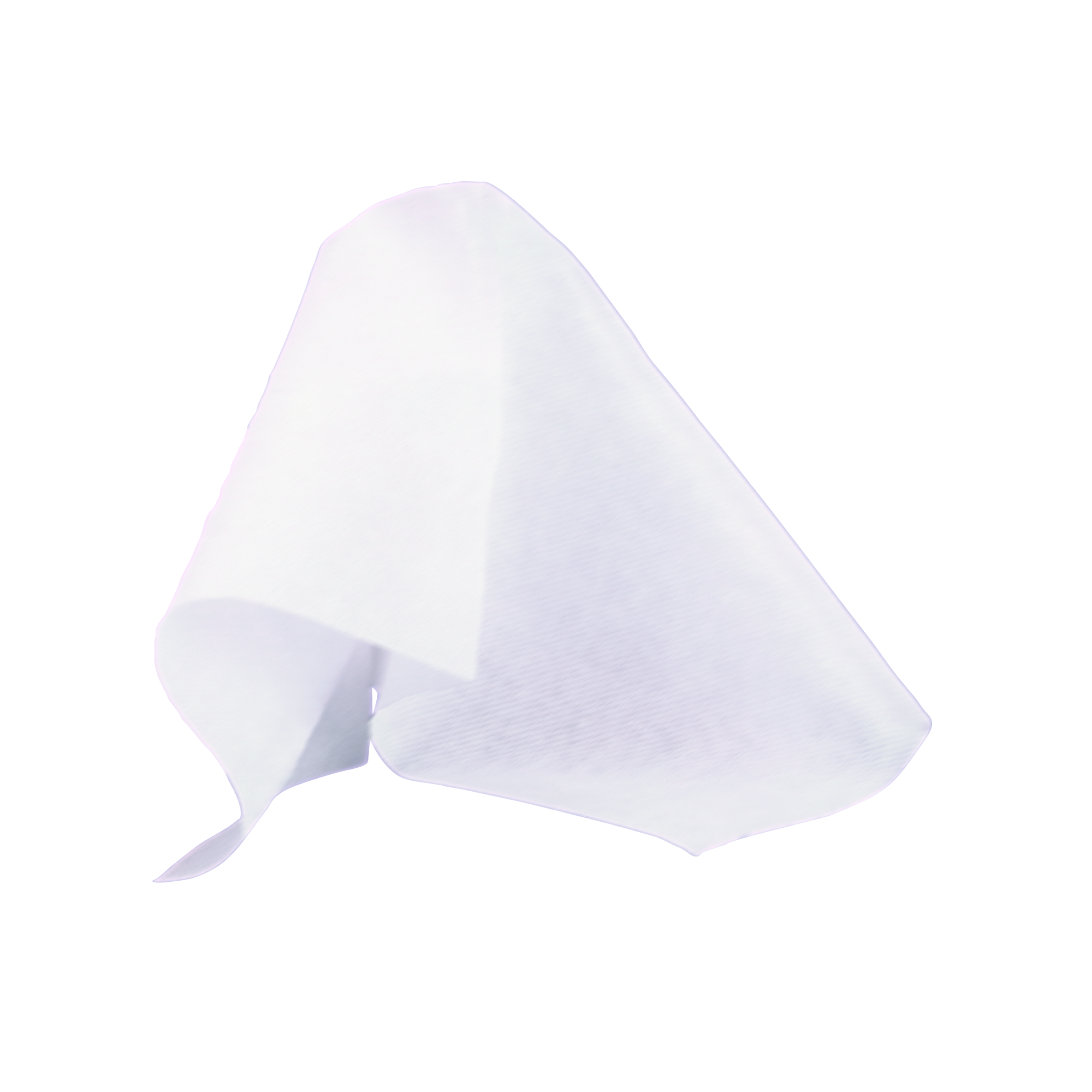Part 1: The Basics
Welcome to the Incontinence Guide, presented by Tranquility® Products. Incontinence, also known as loss of bladder or bowel control, is a highly prevalent condition in the U.S. and across the world. We are excited to provide you with a blog series that takes a comprehensive look at incontinence and answers the top questions people have about this condition.
Incontinence Guide – Part 1: The Basics will answer the following questions:
2: How Common is Incontinence?
4: What are the Types of Incontinence?
5: So, You Have Incontinence. Now What?
Incontinence Guide – Part 2 covers treatments for incontinence, followed by Part 3 on living with incontinence and Part 4 on caregiving and incontinence.
What is Incontinence?
The most common question regarding incontinence is almost always, what is incontinence?
Incontinence is the involuntary loss of urine or stool. More generally, it is the accidental leakage of urine or bowel from the body. Other common phrases for incontinence are loss of bladder control, bladder leaks, overactive bladder, bedwetting and others. Incontinence can be experienced temporarily or can be lifelong.
Incontinence can be urinary (pee), fecal (poop) or both. Urinary incontinence is the term used for people with only bladder leakage; fecal incontinence is used for people experiencing bowel leakage. Urinary incontinence is the most common type of the two. Urinary incontinence can be light, which is described as light drips and dribbles when you laugh, sneeze or don’t fully empty the bladder. Urinary incontinence can also be heavy, described as full urinary voids or full bladder release of urine.
Both adults and children can experience incontinence. Incontinence is more common in older people because incontinence is caused by medical conditions and diseases that are more commonly experienced in old age.
If you experience incontinence, you are not alone!
How Common is Incontinence?
Incontinence is a common condition in the U.S. A recent study shows that over 46 million Americans experience some type of incontinence. That’s one in six U.S. adults! In fact, one in three people will experience a loss of bladder control at some point in their lives.
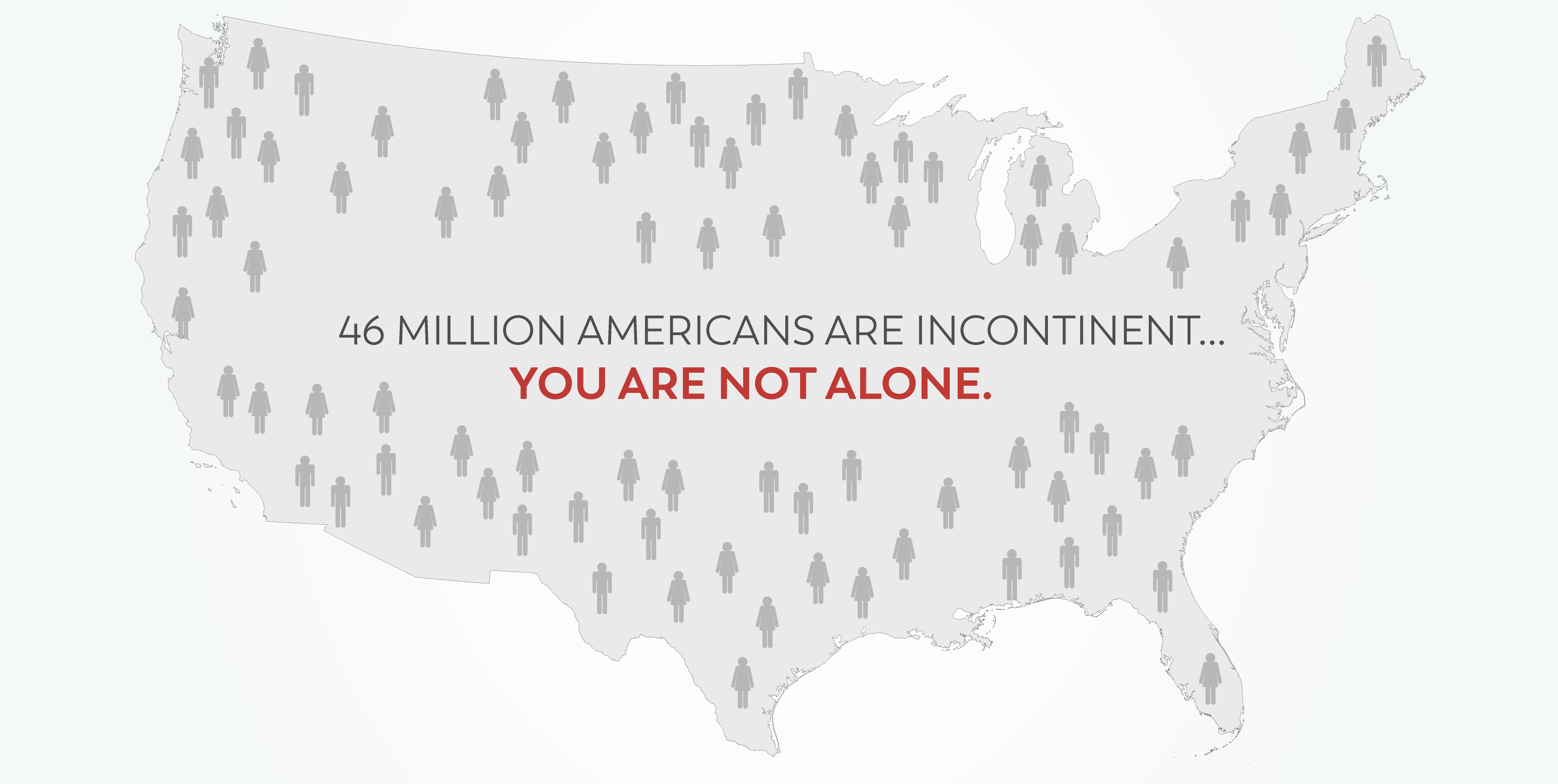
As we age, our risk of incontinence increases. Incontinence is not caused by age, but as we get older, we are at risk of other diseases and conditions that may cause incontinence. More than half of adults over the age of 65 experience urinary or fecal incontinence. Although not everyone will experience incontinence, chances are as you grow older, you or someone you know will develop incontinence. Therefore, it is important to understand what causes incontinence and what to do if you or someone you know has incontinence.
What Causes Incontinence?
Incontinence is not a normal part of aging. Urinary incontinence, as well as fecal incontinence, is a condition that is a result of another disease, condition, disorder or age-related body change. Urinary incontinence can be caused by the following:
- Weakened pelvic floor muscles
- Nerve damage that effects the bladder
- Enlarged prostate and prostate cancer
- Childbirth
- Surgery (such as hysterectomy, cystectomy or prostatectomy)
- People with diseases like diabetes, Parkinson’s, Alzheimer’s and others, may experience incontinence as a result of the disease
- People with neurological disorders like spinal cord injuries, a stroke, multiple sclerosis, a brain tumor and more can experience incontinence
- Children born with disorders like autism, Down syndrome, cerebral palsy and Angelman syndrome may experience incontinence as they develop through adolescence
There are alternative causes of temporary incontinence, such as urinary tract infection (UTI), constipation, certain medications, alcohol, caffeine and other food and drink that irritate the bladder or bowels.
Is incontinence normal during your period?
Yes, some women experience urinary incontinence around the time of their menstrual cycles. One study showed that over 40% of women surveyed experienced a slight loss of bladder control just before or during their period. The numbers for just after menstruation were much lower.
Keep in mind, menstrual pads are not designed to manage incontinence. Period pads are designed to hold menstrual flow, while incontinence pads are designed to absorb a rapid flow of urine, and with a much higher fluid capacity. Bladder control pads, such as Tranquility Personal Care Pads and Liners, also can neutralize urine odor, which most period pads do not.
What are the Types of Incontinence?
There are two types of incontinence, urinary incontinence and fecal incontinence. Urinary incontinence is broken down into six types (stress, urge, overflow, reflex, functional and mixed).
Types of Urinary Incontinence
Urinary incontinence is more common than fecal incontinence, with about 44% of adults over 65 experiencing only urinary incontinence and approximately 17% experiencing only bowel incontinence.
Stress Incontinence
Stress incontinence is when there is a sudden pressure or stress on the bladder that causes urine to unexpectedly leak. Sudden pressure or muscle contractions on the bladder are caused by coughing, sneezing, exercising, heavy lifting or laughing. Stress incontinence is more common in women, as it can be a result of weakened pelvic floor muscles due to childbirth and menopause.
Urge Incontinence
Urge incontinence is a sudden urge to urinate that is so strong it cannot be held long enough to reach the bathroom. Urge incontinence is also known as overactive bladder (OAB). Urge incontinence or OAB can be the result of nerve damage, bladder spasms, stroke and other conditions.
Mixed Incontinence
Mixed incontinence is the combination of urge incontinence and stress incontinence. Mixed incontinence shares the symptoms and causes of both stress and urge incontinence. Therefore, people with mixed incontinence experience both sudden stress on the bladder and a sudden urge to urinate, causing urine to leak before they can use the bathroom. It is common in women following childbirth and menopause, as well as with nerve damage, multiple sclerosis (MS), diabetes, stroke and others.
Overflow Incontinence
Overflow incontinence occurs when the bladder is unable to contain urine under pressure. The bladder fills up and eventually overflows, causing urine to leak. People with overflow incontinence may also feel like they cannot completely empty the bladder. Overflow incontinence is common for men with an enlarged prostate and in adults with a UTI.
Reflex Incontinence
Reflex incontinence is caused by bladder muscle contractions that cause urine to leak out without warning. Reflex incontinence is similar to urge incontinence; however, the difference with reflex incontinence is the absence of the warning or urge to go. Reflex incontinence is common in people with neurological impairments, such as spina bifida, MS and spinal cord injury. It can also be the side effect of surgery or radiation treatment.
Functional Incontinence
Functional incontinence is when a person cannot get to a bathroom fast enough or cannot recognize the need to go to the bathroom. It is often due to physical or mental impairments. People with physical disabilities that keep them from being able to get to the bathroom experience functional incontinence. Alzheimer’s and other dementias cause changes in the brain that can make adults unable to recognize the body’s signal of the need to use the bathroom. Additionally, people with Alzheimer’s or other dementias may experience confusion trying to find the bathroom and urinate before they make it to the toilet. Functional incontinence is often urinary and fecal.
Fecal Incontinence
Fecal incontinence is the involuntary loss of stool/feces and ranges from occasional leaks to complete loss of control. Fecal incontinence can be temporary or recurring. People can experience temporary incontinence with diarrhea, hemorrhoids or constipation, whereas fecal incontinence caused by muscle damage, surgery or dementia is often recurring.
Fecal incontinence can be experienced with or without urinary incontinence. Fecal incontinence is less common than urinary incontinence, but still affects over 17% of adults over 65 in the U.S.
So, You Have Incontinence. Now What?
Now that we have established some of the fundamentals of incontinence, we can start to address questions like:
What are the treatments for incontinence?
Are there solutions for incontinence?
Should I talk to my doctor about my incontinence?
Part 2: Treatments for Incontinence
Incontinence Guide – Part 2: Treatments for Incontinence will answer the following questions:
1: What are the treatments for incontinence?
2: Are there solutions for incontinence?
3: Should I talk to my doctor about my incontinence?
Incontinence Guide – Part 3 will cover living with incontinence. The last part of the series, Incontinence Guide – Part 4, will discuss caregiving and incontinence. The Incontinence Guide – Part 1 covered what incontinence is, the types, causes and more.
What are the treatments for incontinence?
There are several treatments for incontinence, and the treatments vary based on the cause and severity of the incontinence experienced. Common treatments for incontinence include pelvic floor muscle exercises (Kegels), medication, surgeries and procedures, catheters and absorbent products.
Pelvic Floor Muscle Exercises
Pelvic floor exercises help strengthen the pelvic floor and bladder muscles, allowing for improved bladder control. Pelvic floor exercises are particularly helpful for people experiencing stress incontinence and urge incontinence. The most common exercise to strengthen the pelvic floor muscles for both men and women are Kegel exercises.
As we age, we slowly lose some of our muscle mass and strength. It is a natural aspect of aging and is not necessarily associated with a disease or condition (although it certainly could be). Loss of bladder control is not a normal part of aging and is always a result of an underlying disease or condition. However, the condition may be as simple as the weakening of the bladder or pelvic floor muscles. Weakening bladder or pelvic floor muscles in older adults is often due to lack of physical activity or general physical changes that make holding in urine more difficult.
Medications
Multiple medications are also known treatments for incontinence. Anticholinergics and Mirabegron are used to treat urge incontinence by relaxing the bladder muscles. Alpha blockers are another medication that is used for men to relax the muscles in the prostate. Women may have the option to use topical estrogen to improve incontinence.
While medications are a common treatment for incontinence and work well for many, it’s worth noting the risk of harmful side effects in older adults and the risk of polypharmacy.
Surgeries and Procedures
Surgery is one of the most common treatments of the underlying condition that causes incontinence. Common surgeries that can help improve incontinence include sling surgery, urethra bulking agents, artificial urinary sphincter surgery and colposuspension.
Various surgical procedures like nerve stimulators, Botox and electrical stimulation may be used as treatments for incontinence. Medical devices like urethral inserts and pessaries are sometimes used to treat women with urinary incontinence.
While surgeries can be done to improve incontinence, incontinence can also be a side effect following surgery. In some surgeries, like removal of the prostate, bladder or kidneys, incontinence may be an unintended outcome of the surgery. In many cases, the incontinence experienced after a surgery is temporary and will improve with time.
Catheters
One way to manage incontinence is through the use of a catheter. A catheter is a tube that is inserted through the urethra and into your bladder, allowing urine to drain. There are three types of catheters: indwelling, external and intermittent catheters. Indwelling catheters, sometimes referred to as a Foley catheter, are inserted by a healthcare professional into the bladder and are used for a longer period of time. The tube is connected to a collection bag that stores the urine. An external catheter, also known as a condom catheter, is worn outside the body, secured around a man’s penis. An intermittent catheter is inserted into the bladder for a short period by the user to drain the bladder and is then promptly removed. This is often referred to as a self-catheter and is used by those who feel comfortable toinserting and removing the catheter to drain the bladder themselves. Each type of catheter has a different use based on the incontinence experienced and why it is needed.
While catheters work extremely well for many people, they also come with a risk of side effects. The most common side effects are infections, specifically urinary tract infections, difficulty urinating, patient pain and challenges with sexual function.
Absorbent Products
One of the most common ways to manage incontinence is the use of disposable absorbent products. There are many styles, sizes, shapes and functions of absorbent products to meet the needs of all different body shapes and severity of bladder loss.
For people with light incontinence (drips and dribbles), personal care pads, liners and guards are the preferred solution. For those with heavier incontinence, which is full loss of urine control and potentially fecal incontinence (loose stool), the absorbent products of choice are tab-style disposable briefs and pull-on style absorbent underwear. Booster pads are another option for those with heavy incontinence. We will discuss all of these products in detail in Part 4 of this article, below.
Absorbent products are available in a variety of places. From the grocery store to your local pharmacy to countless online retailers, absorbent products are widely used by many with loss of bladder control.
Are there solutions for incontinence?
There are many solutions for solving or reversing incontinence. As mentioned above, there are surgeries and procedures that treat the underlying cause of incontinence. When completed successfully, many of these procedures can result in temporarily or permanently regaining bladder control. For instance, men with an enlarged prostate may experience frequent urination, sudden urges to go, inability to empty the bladder completely, and/or trouble urinating or initiating flow even when the bladder feels full. For women, loss of bladder control may be experienced after childbirth due to nerve damage or pressure on the urethra. In both instances, a doctor may recommend surgery to treat these conditions. That is why it is important to speak with your doctor about incontinence-related issues.
Should I talk to my doctor about my incontinence?
Yes. Talking to your doctor can be an incredibly important step in improving your incontinence experience. According to the Urology Care Foundation, men and women wait an average of four years before speaking with a healthcare professional about their bladder issues. The best first step is to bring up the topic of bladder loss with your primary care physician. Based on the conversation with your primary care physician and their evaluation, you may be referred to see a urologist. A urologist is a doctor who specializes in the treatment of the urinary system. When visiting a urologist, you may consider these Top 6 Questions to Ask Your Urologist.
Another helpful resource for before or after you discuss your urinary challenges with a physician is a bladder diary. Click here for a three-day bladder diary that you can print and use to track your fluids, trips to the bathroom, leakage and activities.
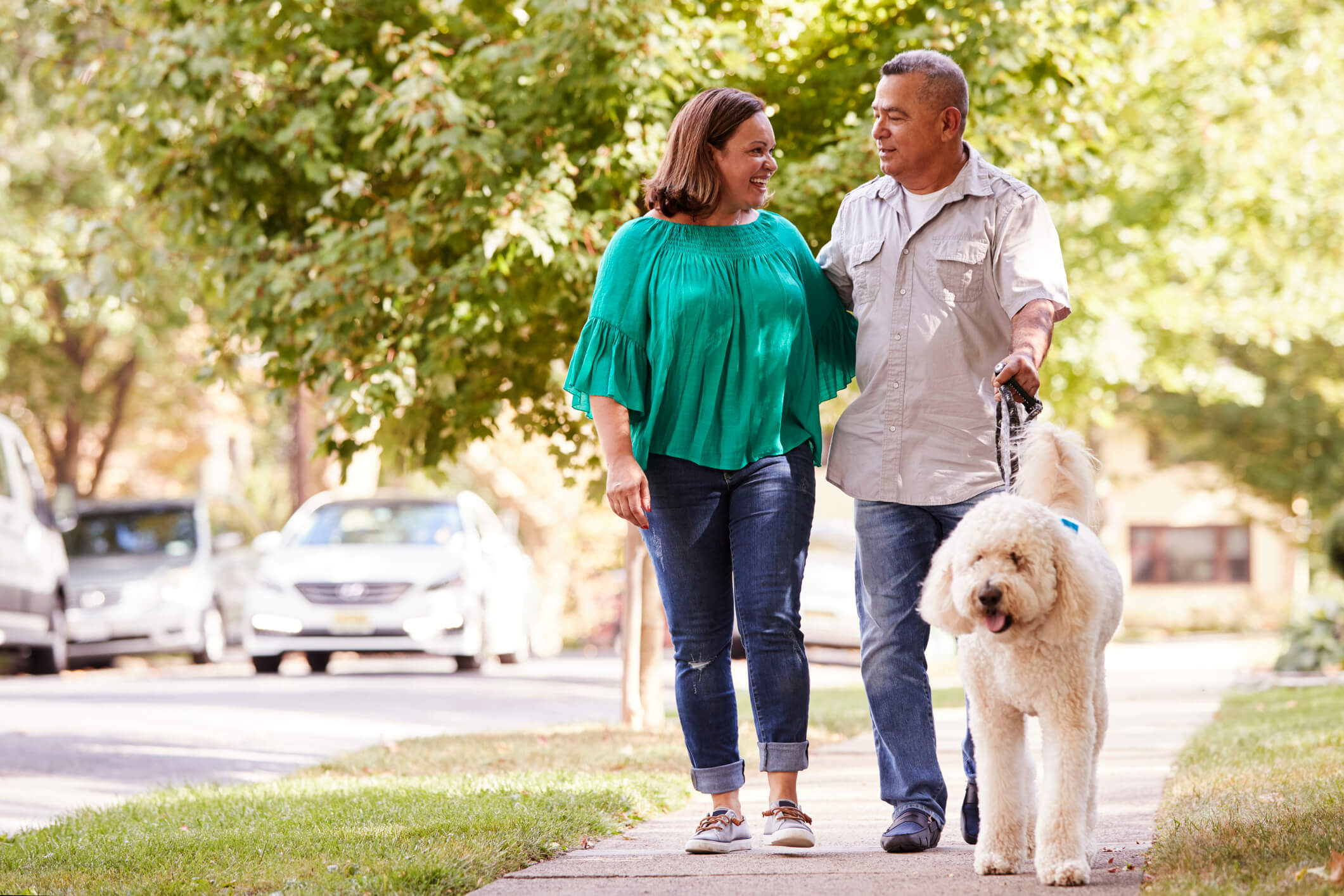
Part 3 – Living with Incontinence
Incontinence Guide – Part 3: Living with Incontinence will discuss the following topics:
1: How to Live with Incontinence
2: Mental Health and Incontinence
3: Stories from People with Incontinence
4: Additional Options and Services for Living with Incontinence
In the final part of the series, Incontinence Guide – Part 4, we will discuss caregiving and incontinence. The Incontinence Guide – Part 1 covered what incontinence is, the types, causes and more, and Part 2 discussed treatments for incontinence.
How to Live with Incontinence
Learning to live with incontinence takes time, adapting and some lifestyle changes. Particularly for adults who develop incontinence later in life, losing the ability to control your bladder or bowels can be frustrating and disheartening. However, for the men and women who take action to treat and manage their incontinence, living with incontinence doesn’t have to be all negative.
It’s important that you do not wait to take action. Doing research online (like you are here!) and reaching out to speak with your doctor are great initial steps to help you learn to live with bladder or bowel control challenges. Here are some initial tips that can help with the daily management of bladder or bowel loss:
- Avoid known triggers – Take note of any food or beverages that make your incontinence worse. Foods that are spicy and acidic, or milk- and tomato-based products are known irritants for those with loss of bladder control. Additionally, drinks like coffee, tea and alcohol can also increase the frequency of urinary incontinence.
- Plan for the day – Knowing what you plan to do for the day can help you prepare. For longer days or trips, packing a few extra disposable products or a change of clothing can be a big help. Additionally, knowing where the bathroom is at your work, gym, doctor’s office, the store or wherever you go, can be a big help.
- Stay hydrated – It’s a common myth that drinking less will decrease bladder issues. In reality, staying hydrated by drinking at least six to eight glasses of water each day will actually help keep your bladder functioning properly. Click here to learn about Water Intake Calculators.
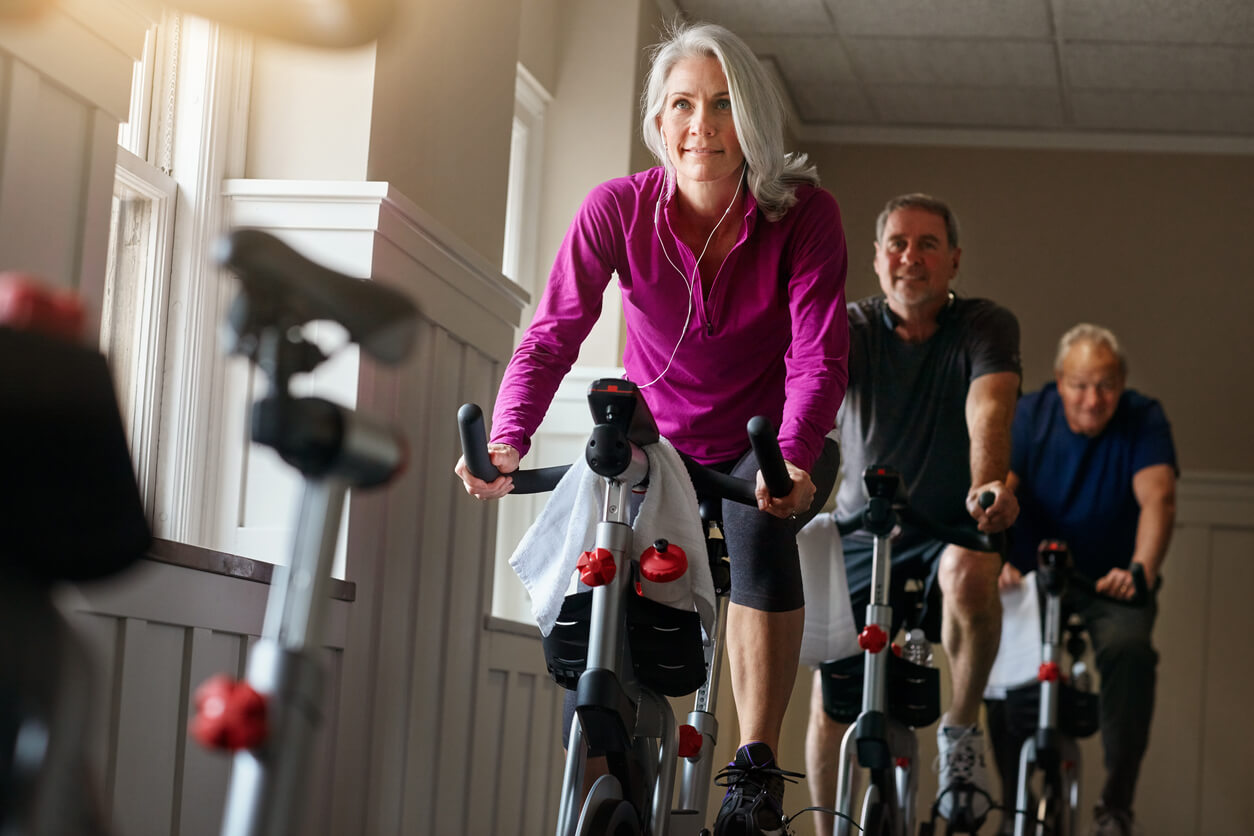
Remain active and in shape – Maintaining a healthy weight and staying active can help you take control of your bladder or bowel loss challenges. Research has shown that each five-unit increase in body mass index (BMI) is associated with a 60% increase in risk of urinary incontinence. Stated another way, losing 10% of your body weight can lower your risk of urinary incontinence episodes by 50%. Regular exercise and activity are great ways to manage incontinence. Read more about Incontinence and Healthy Weight and 5 Tips to Maintaining a Healthy Weight.
Mental Health and Incontinence
While it’s important to manage the physical symptoms of incontinence, it’s also critical that you address the possible mental effects as well.
Physical and mental health are strongly linked. Managing both will help ease some of the challenges brought on by long-term conditions like incontinence.
Mental illnesses and disorders are among the most common health conditions in the U.S. – according to the CDC, more than half of Americans will be diagnosed with these conditions at some point in their life. Those living with incontinence are at greater risk to experience stressors that can make managing mental health even more challenging. Embarrassment, lack of confidence, the inability to engage in social activities and a higher rate of feeling isolated or lonely are all common for someone experiencing incontinence.
Studies have shown that stress, anxiety and depression can be contributing factors to the development or worsening of incontinence. Anxiety and stress increase the sensitivity of the body’s nervous system, as well as muscle tension. This sensitivity and tension can become unwanted stimulation for the bladder, leading to symptoms of Overactive Bladder (OAB). Nocturia, the frequent awakening from sleep to use the bathroom, is also heavily associated with stress, anxiety and depression.
Please note that not all mental distress or symptoms are caused by mental illness – anyone can experience the symptoms of poor mental health and the physical symptoms it produces. If you or your loved one are experiencing mental distress due to incontinence, we advise you to speak with your doctor or other healthcare professional right away.
Stories from People with Incontinence
If you or a loved one is stressed out or depressed due to incontinence, here’s one of the best ways to lift your spirits – hearing from those who have faced the challenges of incontinence and found success in managing it. In this section, we will dive deeper into the true experience of those living with incontinence by sharing the stories they submitted to us.
“I have a very overactive bladder and IBS (irritable bowel syndrome). I was always miserable because I was having accidents every day and never went out of the house. Other products always leaked or didn’t last long enough to allow me to relax. I got so depressed that I ended up hospitalized for depression. Tranquility ATN (All-Through-the-Night) Briefs helped me to feel better. They are very comfortable and have great absorbency and containment. I love the fit and I feel secure in this product. When it absorbed my five-accident episode, I realized that I can go about life freely again. I am feeling hopeful, bright, happy and healthy. My depression has lifted, and my body and mind feel well.”
– Scott, Tranquility product user from Missouri
“After having surgery on my pelvic muscles to treat my incontinence didn’t go as well as expected, I ended up with even heavier urinary leakage. I tried different types of liners and pads inside my regular underwear, but had accidents. It seemed that I didn’t have any other choice but to use adult diapers, so I transitioned to Tranquility tape-tab briefs. Now I have more protection while performing all of my favorite physical activities, such as inline skating. … I regained my freedom with Tranquility.”
– Ivan, Tranquility user from British Columbia
“I’ve been doing a lot of research on incontinence. What you can do to manage it, what products work, what treatments work … There was one thing that was consistent on every website and advertisement. They all claimed to ‘improve your quality of life.’ Then they have some testimonial that always feels so clipped and sterile that you feel like it’s fake … But, I was wrong. I understand now. I can truthfully and unabashedly say Tranquility products have improved my quality of life.”
– JD, Tranquility user and Veteran
Additional Options and Services for Living with Incontinence
The stories shared above are enlightening; however, sometimes it can be challenging to find the resources you need to get the products you or your loved one deserve, because of insurance coverage and financial issues, or other factors. Here are a few services that may assist you in getting the right products that help you live your best life.
Medicaid / Health Insurance Coverage – The U.S. Department of Health and Human Services has resources to provide eligibility information on Medicaid. For some, Medicaid or other insurance plans have coverage options for incontinence supplies. Learn more by reaching out to your current insurance provider, or check out this article where we break down Medicaid coverage for incontinence products.
Veterans Benefits – Veterans are more likely to develop incontinence within their lifetimes, due to environmental conditions they faced, a higher likelihood of post-traumatic stress disorder and other health conditions. If you or a loved one are a Veteran in need of incontinence supplies, you may be able to get them at no cost to you through your Veterans Affairs benefits, along with your doctor’s prescription. Other organizations, such as the Elizabeth Dole Foundation, offer programs that support Veterans and their caregivers with up to 16 hours of free in-home care service.
Diaper Banks – There are many locally run programs, such as diaper banks, that offer free or low-cost surplus diapers and other incontinence care products to those in need. Be sure to check into what might be available in your community to see if there are any options that are right for you.

Part 4 – Caregiving and Incontinence
Incontinence Guide – Part 4: Caregiving and Incontinence will discuss the following topics:
2: Products to Help with Caregiving
Understanding the Issues
Caregiving has often been described as challenging but rewarding. Whether caregiving is done formally (paid) or informally (unpaid), there is a certain gratitude, pride and sense of love that is experienced between the caregiver and care recipient. If you are in the process of caring for another with incontinence, or are considering providing some assistance, here are some ideas that can help.
First, incontinence is typically a private issue, and as a caregiver you will want to learn everything you can about the conditions impacting the person in your care. This includes any bladder or bowel problems and other health-related challenges the individual may be experiencing.
You may wish to speak with the physician of the person in your care. Their doctor can help provide you with more information on how to best provide care, or you may even make them aware of a challenge they didn’t know existed. Once you understand their medical- and social-related challenges, you can develop a plan and learn about what products, services and tools may be able to help.
Products to Help with Caregiving
If the person in your care experiences leaks, accidents, wet clothes or bedding, and are having to change their product 10 to 15 times a day, that is frustrating and can lead to social withdrawal and isolation. If the individual was previously attending events, going to the store, or doing other activities and is no longer comfortable leaving the house, it may be due to poorly performing incontinence products.
Well-designed, high-quality incontinence products can help those in your care regain their confidence and freedom to live their everyday life. In Part 2 of this article, we gave a short introduction to the styles of absorbent products available to manage incontinence. Here, we will provide further detail about the products that have been consistently successful for both users and caretakers.
Disposable Adult Diapers
Commonly called “adult diapers,” these products are also referred to as disposable briefs or disposable underwear. These are best suited for more severe levels of urinary or bowel incontinence and are manufactured in both daytime and nighttime styles.
Briefs – These are products that can be opened and re-closed using tape tabs or hook-and-loop tabs. This makes for an easier checking and changing process, especially for those with mobility challenges or a limited range of motion. For these reasons tape-tab briefs are usually preferred among caregivers. They are designed for maximum absorption, coverage and wear time, with the ability to be custom fit to the wearer’s body. One potential negative is that they are typically a bit bulkier under clothing.
Underwear – These are pull-on style products, most similar to regular underwear, that are commonly recommended for those who are able to change themselves. They allow for greater independence that enables wearers to maintain their normal lifestyle and perform day-to-day activities. Because they are typically a bit slimmer than disposable briefs, pull-on underwear can make it easier to transition into using full-coverage incontinence supplies. And like their tabbed counterparts, pull-on underwear is available in maximum absorbency levels to protect against severe bowel and urinary incontinence, making them ideal for extended wear.
Note that both briefs and underwear can be constructed from several types of material, most commonly in poly-backed (plastic) or a clothlike fabric. Clothlike material is typically more discreet because it is less likely to make crinkling noises under clothing. It also can be softer against the skin and can be designed to be breathable (but still waterproof) allowing air to circulate and keep skin dry and healthy. Poly-backed material may provide a stronger and more visible sense of security to some wearers than clothlike products do – even though both styles can absorb the same amount of fluid.
Pads
Pads are a versatile option for managing urinary incontinence and are manufactured in many different forms. Full-coverage products are not always necessary when managing incontinence, especially if the condition is not as severe. Below we’ve broken down a couple of common styles of pads you may see and what they are designed for.
Personal Care Pads – These pads are used inside of regular underwear and are a great option for those experiencing light to moderate incontinence. They are more discreet than disposable briefs or underwear, and are comfortable, easy-to-change options. Please note, these cannot be layered on top of one another due to their moisture-proof backing.
Booster Pads – This type of product specializes in extending the lifespan of another disposable incontinence product. They are to be layered on top of another product, such as a disposable brief, to add additional absorbent capacity to the product. Once the booster pad absorbs an initial amount of fluid, it allows additional fluid to flow through into the host garment. This saves time by requiring fewer garment changes, and also saves money due to fewer products being used. Note that booster pads should only be used in other incontinence products and never used in regular underwear because of their flow-through design.
Underpads – Last up in our pads category are underpads, which are also commonly referred to as “Chux.” These are typically used on beds, wheelchairs or other flat surfaces as the last line of defense in incontinence management. Catching and absorbing excess urine that may have leaked, this product can help save time, supplies and the need for an extra load of laundry. Even if no leaks occur and the underpad remains dry, having them in place helps provide reassurance to both the caretaker and those in their care.
Specialty Absorbent Products
Swimmates – This unisex, pull-on style product helps provide protection and security when immersed in water, without swelling, falling apart or making a mess in the pool. This enables the wearer to participate in water activities with less worry about bowel incontinence. This can result in positive physical and mental health benefits, helping to keep the wearer happy and healthy. Swimmates are an excellent option for caregivers to help those in their care feel empowered to resume regular activities. Learn more about Swimmates here.
Ancillary Supplies
Cleaning and maintaining skin health are important aspects of good incontinence management. Good hygiene stops the buildup of harmful bacteria that can lead to itchy rashes, unwanted UTIs and other irritating conditions. Cleansing wipes and moisture-management sheets are great items to have on hand for a variety of situations when managing incontinence. Moisture management sheets are made of a thin, ultra-absorbent, clothlike material that is ideal for tucking, folding and wrapping in or around skin folds, the groin area or under breasts – to wick away and retain light-to-moderate moisture.
If you, or someone you are caring for are in need of specialized or medicated products, please talk to your doctor about what options may be best for you.
Caregiver Success Stories
Being a caregiver for someone with a challenging condition like incontinence can be hard at times. Reading about those who found success in helping their friend, family or loved one manage incontinence can be truly uplifting.
Below are a couple of real stories that caregivers shared with us, describing how finding the right products can make all the difference.
“My brother’s incontinence has negatively affected his dignity and self-esteem, and reduced his quality of life to its lowest level. He couldn’t enjoy having fun times with his family and friends, such as dining at restaurants, going to picnics or movies, or enjoying any outdoor and indoor activities. He felt so isolated and alone. He felt no one cared about him. … Incontinence products from a mass-retail brand did not work for him. These products leaked, were thin, uncomfortable and not absorbent. … I found Tranquility® Premium OverNight™ Underwear and this product works! My brother was so delighted with it. He said it was comfortable, absorbent and did not leak, and that he could get back to enjoying his life again. What a difference one product made in improving his quality of life.”
– Family caregiver, Wisconsin
“When we began using Tranquility® incontinence products, the amount of linens and laundry we had to wash and the use of barrier cream went down. … Residents had fewer behavioral episodes as a result of getting better sleep. 100% of the residents slept all night and had almost zero bed changes. Almost all residents commented about how dry they stayed during the night. I loved knowing that my residents were happy the whole night and felt dryer, longer.”
– Caregiving Professional, Ohio
Want to read about some other inspiring caregiver experiences? Try these three success stories:
- A Mother’s Medicaid Story: Maggie gets the products she needs for her daughter, covered at no cost under Medicaid
- A Caregivers Experience with Dementia: Kitty finds life-changing products to assist with husband’s care
- Aided in her caregiving journey: Candace discovers products that give her peace of mind
FAQs (Frequently Asked Questions)
What does the term “incontinent” mean?
Incontinent means that a person cannot control the loss of urine or stool from their body.
Is there a difference between “continence” and “incontinence”?
Continence is defined as the ability to voluntarily retain a bodily discharge, such as urine or stool. On the other hand, incontinence refers to the involuntary loss of urine or stool.
Can you fix incontinence?
It is possible for incontinence to be reversed through surgery, therapies, medications, exercises diet change or other methods. Even if none of these procedures or treatments is able to fully eliminate one’s incontinence, they may help an individual manage their incontinence, allowing that person to go about their normal, everyday activities. The likelihood of reversing, eliminating or find ways to successfully manage incontinence depends on the type, frequency and severity of the incontinence.
Want More Help? We’re Just a Phone Call Away
Thank you for taking the time to read our comprehensive guide on incontinence. We hope it has provided you with a positive outlook on ways to successfully manage this common, yet complex condition that affects millions of people.
If you would like additional assistance, please contact our Care Center to speak with a representative who can help answer your product or incontinence-related questions. If you are ready to try Tranquility products, take this brief survey and we will send you a free 2-pack sample.
Disclaimer: This blog provides general information about incontinence, health and related subjects. The content provided in this blog, and any linked resources, are not intended to be taken as medical advice. If you or the person in your care has a medical concern, please consult a licensed physician.
Robert Recker
Robert is a Senior Manager of Content Marketing for Principle Business Enterprises, parent company of Tranquility Brand Continence Care Products. He has 15 years of experience creating online educational content in the healthcare industry, specializing in medical supplies.
For more information or questions about this article, please call 1-419-352-1551 or email CustomerService@pbenet.com.

